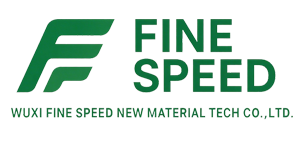News
Single screw extrusion
Among the extrusion processes for preparing PRE wpc decks, single-screw fiber co-extrusion is the simplest extrusion process [12–14]. In the most typical single-screw extrusion process, the length and diameter ratio of the composite material is 34:1, which undergoes two processes, that is, the process of heating and measuring, and a ventilation part to drive off the volatiles during the extrusion process. The material obtained by single-screw extrusion is a pre-prepared material filled with fibers and polymer particles. Of course, also need drying equipment to dry this kind of pre-prepared material. The feed method of raw materials is usually by gravity feed. The heating and mixing mechanism is a heat preservation barrel heating and screw shearing process. The advantage of using single-screw extrusion is that this method has been generally proven in production practice, considering the perspective of production cost. This method is also the most economical and energy-saving method. The disadvantage is that the output rate of the composite profile is not high, a heating system is required, and the simultaneous heating of the polymer and the fibers leads to an easier decomposition process.
Co-rotating twin-screw extrusion
The co-rotating twin-screw extrusion process is primarily used in polymers such as rigid polyvinyl chloride (PVC). Co-rotating twin-screw extrusion is available in parallel and conical screw configurations. During the extrusion process, the fibers and powders have the same size, usually 250-400 μm. The manufacturing process of PRE wpc decks includes the drying process of high-concentration powder polymer and additives. The feeding method of the material is usually using a plug feeder. The mechanism of heating and mixing is heat preservation barrel heating and screw shearing process. Screw mixing is through screw flight hollowing and gear mixer. Volatiles are achieved by vacuum evacuation. The advantages of this co-rotating twin-screw extrusion process are slower extrusion speeds and lower waste output, which is also a proven technology. The disadvantage is that a drying system is required, and the co-rotating twin-screw extrusion process must require a device to limit the feed size during the filling process.
Injection film
The injection molding process is often used to produce PRE wpc decks with complex geometries. For example, the column caps used in guardrails in building materials are prepared by PRE wpc decks injection membrane method. The current major research on the injection molding process of hollow profile wpc decking is limited to the extrusion process. However, the main purpose of the research is more inclined to the study of material composition and properties.
Compression molding and thermoforming
Compression-molded and thermoformed PRE wpc decks have been studied for many years and have been widely used in the manufacture of automotive composite parts. Continuous compression molding for PRE wpc decks and glass fiber reinforcement for PRE wpc decks have proven to be relatively mature technologies. It is worth mentioning that Germany can produce continuous embossed customized garden wpc decking with a width of 1.3 m and a thickness of 13 mm.
Chat Online


